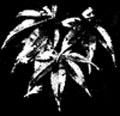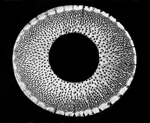|
More "Fuke Shakuhachi" and 'Suizen' Disinformation in Print
and on the Internet, Discovered & Revealed - Debunked & Rejected
Web page last edited and updated on June 1, 2024
INTRODUCTORY COMMENT:
It is a plain fact that none of the below quoted claims and explanations can in any way be corroborated and proven to be true by historically reliable documentary evidence.
2024: 'SUIZEN' DISINFORMATION RESEARCH: EVEN MORE CASES
WEBSITE: shakuhachi.ru. Author: George Debug.
A Russian shakuhachi player presenting himself online as "george_debug" once posted the below statement on his shakuhachi.ru website.
Sadly speaking, very little, if anything importantly reliable is stated in that text at all, i.e. can be said to be historically, factually and unquestionably true:
“Shakuhachi is known throughout the world for its unique, rich timbre, which can vary from crystal clear to windy and dirty at the request of the performer.
In the Middle Ages, it was played by wandering komuso monks (
虚無僧,
"monks of emptiness") who belonged to the Fuke sect of Zen Buddhism.
Komuso hid their faces with a reed tengai hat, wandered throughout Japan, played the shakuhachi and begged for alms.
For them, playing the shakuhachi was a way of meditation; this practice was called “suizen.”
Actually, in the hands of komuso, the shakuhachi was not so much a musical instrument as a spiritual one - it was believed that through playing it one could achieve enlightenment.
Link to:
shakuhachi.ru
COMMENTS by T.O. as of October 21, 2023:
• Well now, first of all: The shakuhachi is not at all "known throughout the world".
Interest, fascination and spreading enthousiasm for the shakuhachi in general first only manifested in USA, since the mid-1960s.
Then followed Europe, although really really slowly, indeed, with the eventual foundation of The European Shakuhachi Society in 2007,
that happened to the credit of and thanks to longtime shakuhachi player and SOAS London ethnomusicologist PhD, Dr. Kiku Day,
a resident of Denmark, Scandinavia, Northern Europe.
Now, as for the comments,
• There were no 'komusō' who wandered Japan "in the Middle Ages", i.e. namely the Kamakura and Muromachi Eras, roughly 1200-1600,
and even later, in the Tokugawa Period, 'komusō' did not belong to any such "thing" as a "Fuke Sect of Zen Buddhism".
Furthermore, the widespread, stereotyped English translation of 'komusō' as "monks of emptiness" is definitely not semantically understood,
correct, properly satisfying nor acceptable.
• No Tokugawa Period 'komusō' did ever hide his (her) faces completely with their "reed tengai hat" before the latter half of the 18th century at the earliest.
• Nothing is specifically known about where (nor how) the Tokugawa Period 'komusō' actually "wandered throughout Japan".
The very majority of the 'komusō's recorded and carefully listed so called "temple" bases were located in the NE half of Japan's largest island Honshū,
from Kyōto and northwards, with but only a few alleged establishments on the S. Japanese island of Kyūshū.
• Simply stated as this: 'Komusō' of the Tokugawa Period are not recorded anywhere in documentary evidence to having ever used the shakuhachi
for "meditation" purposes.
The term 'suizen' does not appear anywhere at all in any known, surviving historical Tokugawa Period document, whatsoever.
• The Western, Christian religious term "spiritual" shall definitly not be applied in any a historical, ideological Japanese context.
There exists absolutely not a single shred of documentary evidence about the shakuhachi dating from the Tokugawa Period suggesting that
"through playing it one could achieve enlightenment".
In any case, however, what would a typical Westerner, any Non-Japanese person, ever appreciate - and internalize - regarding the prospect and potential experience
of achieving Non-Dualistic Buddhist "enlightenment" ... ?
WEBSITE: yohmei.com. Author: Christopher Yohmei Blasdel and others.
Quotation from THE NATION, Thailand, dated February 8, 1999.
"In The Shakuhachi: A Manual For Learning, Yoko Kamisango, writes about this unique
instrument since its introduction to the imperial court nearly 1,500 years ago.
But it was the Zen monks who first recognised its spiritual resonance."
"The komusō (wandering Zen monk) ardently played the shakuhachi as a way toward
enlightenment -- in a style called suizen or ''blowing'' meditation -- instead of zazen (sitting)
meditation, sutra chanting, or activities in which most Zen monks engaged.
This was the reason why the shakuhachi was referred to as a religious "tool" rather than as an instrument, and why the
pieces they played weren't "music" but "meditations."
Link: http://www.yohmei.com/wp-content/uploads/2012/12/The-Sound-of-Zen.pdf
BOOK: The Single Tone: A Personal Journey into Shakuhachi Music. Author: Christopher Yohmei Blasdel.
Published by Printed Matter Press, Tokyo, 2005. Quotation from page 44 (Kindle edition):
"The komusō were a common feature of the Edo Period landscape. Wearing long basket shaped hats, these monks, in the spirit of Kichiku,
wandered the countryside, begged for alms and visited various Fuke Temples while playing the shakuhachi.
Their aim was spiritual enlightenment through sound, a practice they called suizen, "blowing Zen" (as opposed to zazen, "sitting Zen").”
A VERY WELL-INTENTIONED COMMENT:
In 1974, with absolutely no existing documentary evidence supporting his narrative, Japanese music historian Kamisangō Yūkō insisted on the idea
that wandering begging shakuhachi flute players had been practicing 'suizen' even before any proven existence of any so-called 'komusō' in Japan.
Such a totally invented narrative was nonetheless publicized by him and co-authors in the liner notes for a music LP anthology titled "Suizen" that was released in 1974
by the Japanese record company Nippon Columbia.
The term 'suizen' was in actual fact applied to ascetic shakuhachi practice only as late as in or just after 1950 by shakuhachi players
connected with the officially revived Kyōto Myōan Temple in order to
"brand" the special 'Taizan-ha' tradition of ascetic shakuhachi playing that had been started by Higuchi Taizan in the late 19th century.
The term 'suizen' does not appear anywhere before 1950, at the very earliest, in any Japanese literary source related to shakuhachi history,
ideology or practice in any way, at all. Period.
Presenting US shakuhachi player Christopher Yohmei Blasdel as a "co-author" of Prof. Kamisangō's text is very far from the reality:
Blasdel included his own "English adaptation" of the deceptive Kamisangō et al. text in his 1988 publication "The Shakuhachi. A Manual for Learning"
that soon achieved a status as shakuhachi history "oracle" for countless Western shakuhachi admirers and bamboo flute "meditation" aficionados,
first in the United States, next in Europe as well.
WEBSITE: adrianfreedman.com. Author: Adrian Freedman. Site revisited on April 26, 2023.
" ... I discovered the shakuhachi and was happy to find an instrument that was the both the most beautiful instrument I had ever heard,
and one that had a direct link to Zen Buddhist practice, expressed as suizen (blowing zen)."
Link: https://adrianfreedman.com/articles/on-playing-an-instrument-of-zen/
WEBSITE: study.com. Author: Teresa Newman. Instructor: Christopher Muscato. Web page updated on December 23, 2021.
"Shakuhachi music is used as a tool for Zen Buddhist meditation, through the practice of suizen (blowing meditation).
The shakuhachi flute was a favorite of the Fuke Zen (an offshoot of Zen Buddhism existing from the 13th century to the 19th century), and also of traditional Zen Buddhists."
Link: https://study.com/learn/lesson/shakuhachi-flute-music-history-what-is-a-japanese-shakuhachi-flute.html
WEBSITE: panathinaeos.com. Author: Nikolaos Moropoulos. Webpage date: March 25, 2012.
"During the medieval period, shakuhachi were most notable for their role in the Fuke sect of Zen Buddhist monks, known as komusō ("priests of nothingness,”
or "emptiness monks"), who used the shakuhachi as a spiritual tool.
Their songs (called "honkyoku") were paced according to the players’ breathing and were considered meditation (suizen) as much as music."
"Komusō practiced Suizen, which is meditation through the blowing of a shakuhachi, as opposed to Zazen,
which is meditation through sitting as practiced by most Zen followers."
Link: https://panathinaeos.com/2012/03/25/kaoru-kakizakai-a-modern-komuso-zen-priests-of-nothingness/
WEBSITE: alcvin.ca/ryuzen. Author: Alcvin Ramos.
"The monks of old Japan who practiced suizen were called Komuso, or Monks of Nothingness and Emptiness
(Ko: kanji:
虚
emptiness, mu: kanji:
無
nothingness,
so: kanji:
僧
monk or priest).
These monks belonged to a Rinzai Zen Buddhist sect called Fuke-shu,
named after the legendary Tang Dynasty Chinese monk (Ch. P’u Hua) who first inspired the use of a bamboo flute as a meditation tool.
These solo pieces on which suizen are based are called hon-kyoku kanji:
本曲
, or original pieces."
Link: http://alcvin.ca/ryuzen/honkyoku-2/
WEBSITE: Healthy Positive Lifestyle NETWORK. December 17, 2013
"#12 – Suizen – Ancient Flute Music Meditation with Shakuhachi Bamboo Flute."
"Suizen - Ancient Flute Music Meditation with Shakuhachi Bamboo Flute
Flute music meditation became very noticeable in Japan in 1600's through the Komuso movement.
Komuso, which means "monk of emptiness", were wandering monks who were walking by feet all over Japan."
Link: https://hpln.org/flute-music-meditation-suizen/
WEBSITE: edu.burdie.com
"Thirdly, the existed shakuhachi music Honkyoku in fact witnessed the existence of Komuso monks in history.
As an important part of the suizen practice, playing Honkyoku was actually a unique feature of the Komuso monks in Fuke sect.
The Komuso played Honkyoku for enlightenment and alms. The pieces they played were demonstrated in the lists in the late nineteenth century (Deeg, 2007)."
Link: https://edubirdie.com/examples/argument-of-the-existence-of-komuso/
WEBSITE: kcpinternational.com. Web page date: September 18, 2014.
"Komusō monks were also known for playing solo original musical pieces (honkyoku) on a type of traditional Japanese bamboo flute (shakuhachi).
Honkyoku renditions were typically played during meditative practices known as suizen.
The practice is intended to be a healing modality for the monks, a method to attain enlightenment as well as gather alms from passersby."
Link: https://www.kcpinternational.com/2014/09/the-unique-japanese-komuso-monks/
WEBSITE: Academia. Lauren C. Redburn, Masters thesis. May, 2014.
"Beginning in the thirteenth century, the shakuhachi became a very important instrument for the Fuke sect of Zen Buddhism.
They practiced a form of meditation with this flute called suizen (blowing meditation).
These monks played on a fuke shakuhachi (one of three types of shakuhachi this paper will explore, though there are several more).
It is believed that this version of the shakuhachi is the grandfather of the modern day instrument."
Link: https://www.academia.edu/32983467/A_World_of_Flute_Music_A_Look_at_the_Impact_of_Siku_and_Shakuhachi_Flute_Traditions_on_Western_Classical_Repertoire?email_work_card=title
|

Momiji
|

